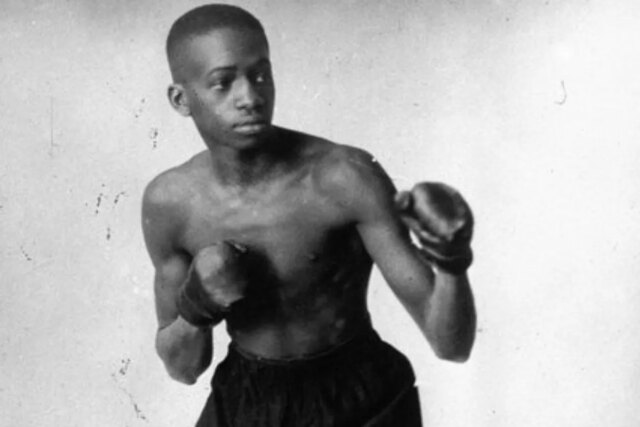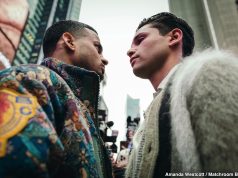Ehe trailer for a film that will be released in theaters in August about the boxing icon ‘Panama’ Al Brownhe first Ibero-American world boxing champion and considered a “Panamanian Afro-gay legend”was presented on the occasion of Pride month in Panama.
The screening of the trailers for the film, titled ‘Brown’co-directed by Panamanian Ricardo Aguilar and Cuban filmmaker and screenwriter Manolito Rodríguez, took place at the Canal Museum, in the old town of the capital, and gave rise to a discussion on the career and life of Alfonso Teólilo Brown, best known as ‘Panamá’ Al Brown, first Ibero-American world boxing champion.
Ricardo Aguilar told EFE that the film takes place in 1938, in Paris, where the boxer goes to live when he loses the title in 1935, after having won it in 1929, and that it tells a bit of the story of Al Brown, ” not only as a boxer, but as an artist that he was and the tastes he had, his sexual preference.
The film, which, according to Aguilar, will be released in Panama movie theaters in August, reflects a large part of Al Brown’s time in Paris, where he works as a “showman” in a cabaret and there he meets the poet, playwright, essayist , French painter, designer and film director Jean Cocteau.
“They then establish a relationship, a friendship, and he (Cocteau) is the one who convinces him to return to boxing again to recover his title that had been taken from him in a fight that was said to have been rigged, and he convinces him and from there begins the way to recover the world title,” he said.
“That is what our film tells, that stage of his life and that relationship he had with Jean Cocteau,” said the filmmaker, who also highlighted that in the film Al Brown is played by the Cuban actor and dancer Leo Fuentes, with a great physical resemblance to the legendary boxer.
Shot in France and Panama, ‘Brown’, produced by Panamanian Sixta Díaz, was the winner of the 2017 National Film Fund Competition (as a film project) and the Coral Award for Best Unpublished Screenplay at the 40th International Festival of New Latin American Cinema of La Havana.
A charismatic and elegant boxer
The charismatic boxer was born on July 5, 1902 in the Caribbean city of Colón (Panama) and died of tuberculosis and destitution in New York on April 11, 1951, after having been the first Ibero-American bantamweight world champion ( 118 pounds).
Brown, who was also a national symbol in Panama, was an elegant black man both in the ring in his fights and when it came to dressing and dancing with Josephine Baker’s company in Montmartre (France).
He sang, spoke seven languages and was the attraction and inspiration of the French surrealists, among them mainly Cocteau, with whom he had an intense relationship.
On June 18, 1929, the Colón boxer was crowned the first Ibero-American bantamweight world champion by defeating the Spaniard Gregorio Vidal in 15 rounds, on points, winning the vacant title.
Brown, who was never knocked out, lost the title on June 1, 1935 in a fight against Spaniard Baltasar Berenguer, who was known as ‘Sangchili’, after apparently being narcotized with champagne given to him to drink between rounds. He had a record of 135 victories, 61 of them by knockout, 18 losses and 13 draws.
Their remains rest in tomb 3,165, in the Amador Cemetery, in the El Chorrillo neighborhood in Panama, where they were repatriated from the United States by popular initiative, according to the late Spanish writer and painter Eduardo Arroyo in his biography ‘ Panama Al Brown, a boxer’s life’, published in 2017.
Pride Month: saving the historical memory of a great Panamanian
Ivan Chanis, executive director of the Iguales Foundation, said that this activity has been iconic in Pride Month, because for many years “history was not fair to Al Brown by delegitimizing his sexual orientation, not including him as part of the story.” (…), with documentaries or even previous films that have been made about Al Brown (that) have ignored his sexuality.”
The activist reflects: “How are they going to ignore sexuality when his partner, a great French artist, a great Frenchman, was his life partner, and all this is part of the vicissitudes, obviously of the discrimination that Al Brown suffered as a man gay and afro”.
“So (highlighting his figure and legacy) is a way to recover our Panamanian history, to give him recognition in all the diversity of what this figure was, and to work based on that in the challenges we have in terms of racism, discrimination due to sexual orientation in a society (in which) it still persists,” he said.







